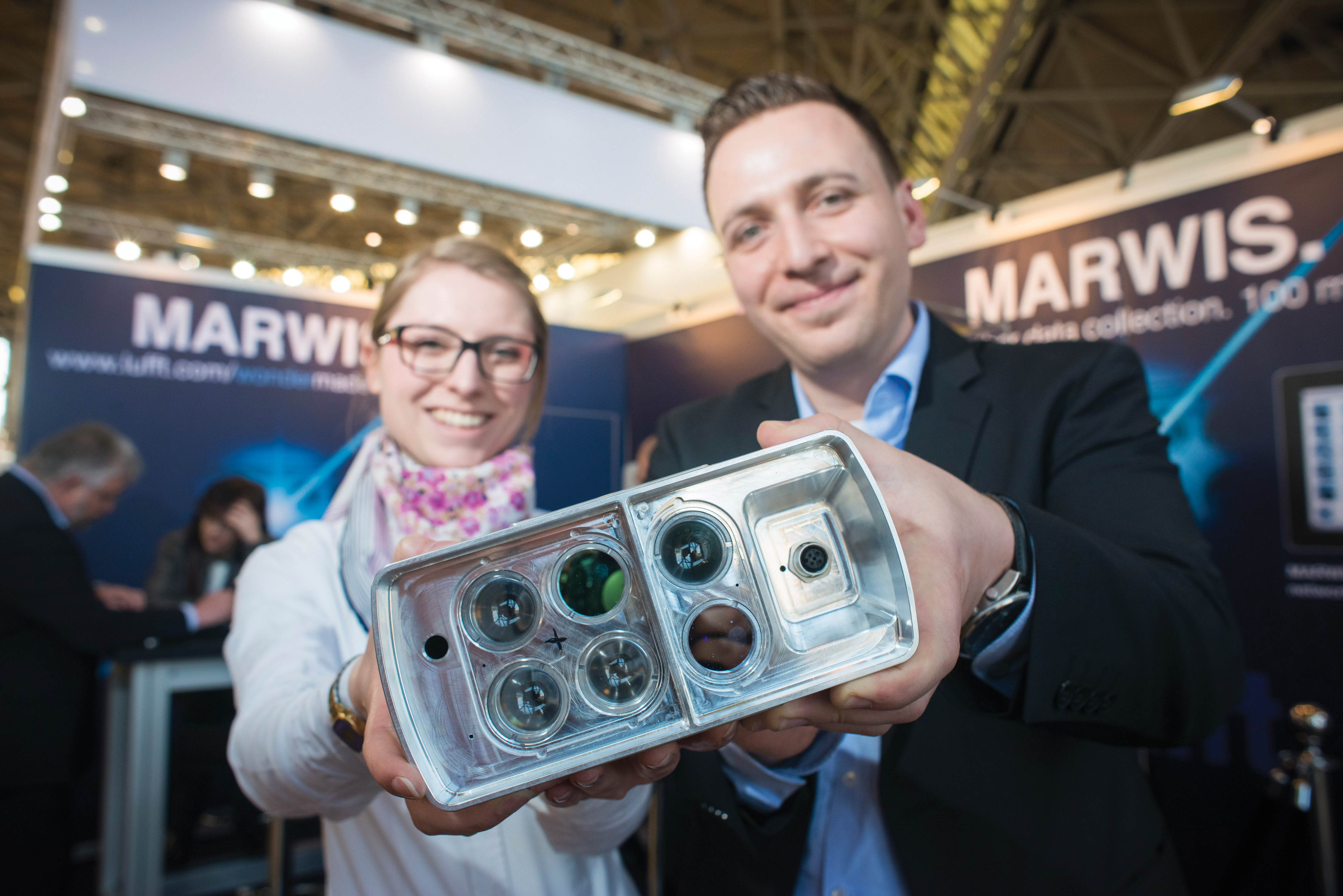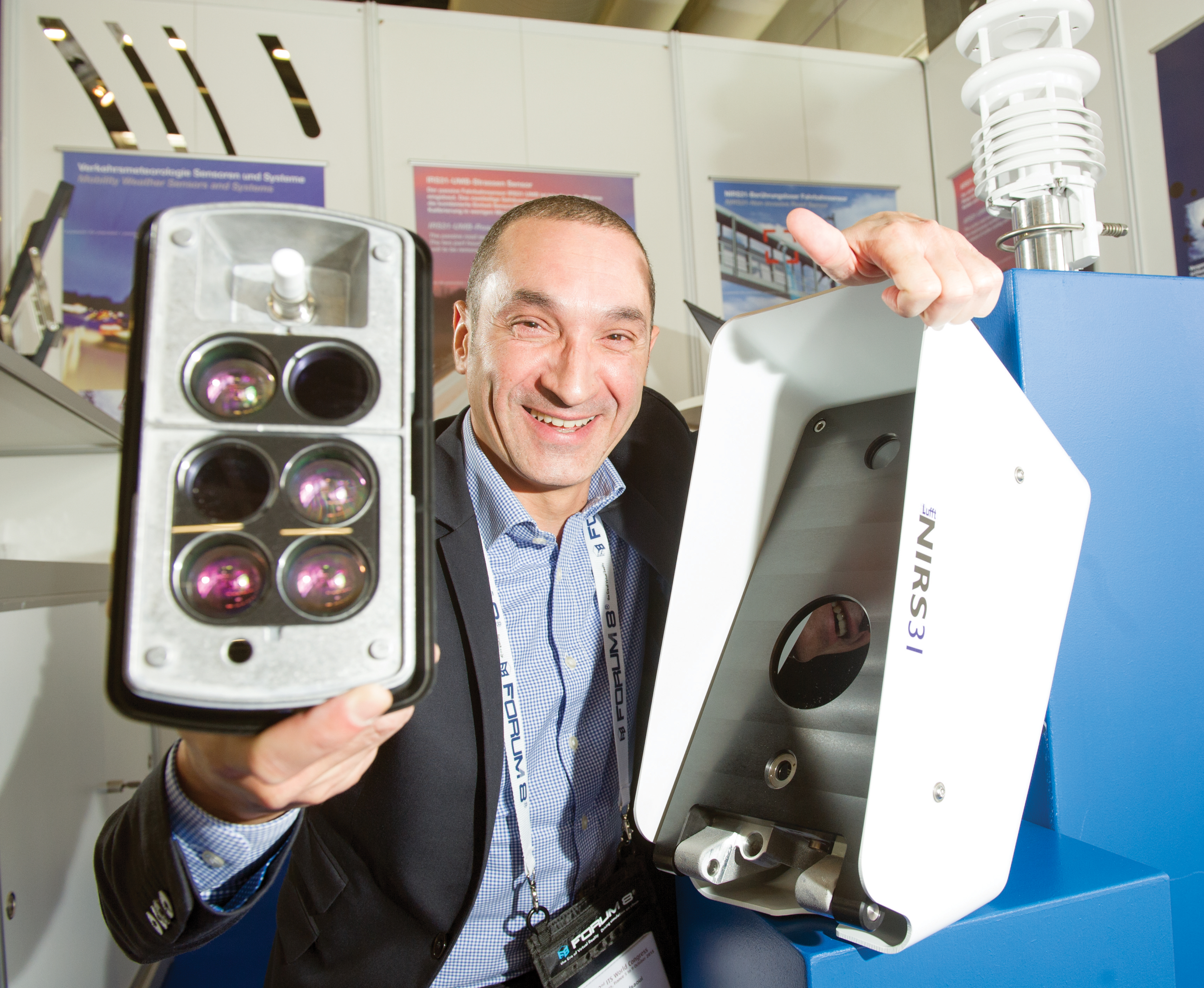
A mobile road weather sensor is providing authorities with new options for monitoring road conditions and winter maintenance operations.
Road and traffic engineers know the vulnerable points in their network – cold spots where ice forms first, high-banked roads where snow accumulates, fog pockets… Traditionally, most authorities will position weather stations at these points to detect and monitor road conditions during bad weather events.
This strategy provides early warning of poor road conditions and indicates when the situation improves, but inevitably the information is an incomplete snapshot of one particular area and not typical of the entire region. Now, however,
With the mounting bracket attached to the vehicle, MARWIS can be mounted or dismounted without tools. It uses LED technology and spectroscopic measurements to take 100 readings per second - which equates to every 22cm when travelling at 80km/h. It measures air temperature, relative humidity, dew point temperature, road conditions (dry, damp, wet, snow, ice), ice percentage and friction. Data from the sensor is transferred via Bluetooth to an iPad in the vehicle’s cab and from there onwards via GPRS to the cloud and Lufft’s SmartView software on the control centre’s computers.
The introduction of a mobile system greatly enhances the information available to winter maintenance teams and enables new ways of thinking about the whole process, says Tobias Weil, company spokesman of Lufft.
“Interpreting the readings from static weather stations to assess the impact on the wider region has always been problematic as roadside conditions and micro climates produce quite different conditions on roads only a few kilometres apart. Because of that very often measurement data can’t be extrapolated to other spots.”
As it costs less than the existing NIRS31Pro-UMB sensor (see box), one local authority wanted to use MARWIS as a fixed station. Klaus Hirzel, managing director, said: “We think it is possible but as the maximum distance from the surface is 2m, it would be quite low and could be exposed to potential damage.”
“From the discussions we’ve had with local winter maintenance offices, we don’t feel MARWIS can replace fixed weather sensors but it can provide good additional dynamic information about the road conditions between the stationary monitoring network’s sensors.
Authorities see potential to reduce the number of static stations and use MARWIS to get more complete data across their wider road networks."
Beyond measuring the road conditions, one authority which is already using the Lufft’s fixed road and weather sensors to support its road treatment regime asked for an additional mobile sensor to equip one or more road salt vehicles.
“By using the percentage ice reading, the operator can adjust the quantity of salt being spread and through our open communication protocols we are also thinking about automating the salt regulation system and integrating data from road salt vehicles,” says Hirzel, adding: “MARWIS can also measure the effectiveness of the spreading by determining friction, ice percentage and freezing point.”
Work on gritter control is already underway on several system integrators.
“MARWIS comes with completely new options and many possibilities of how to use the sensor – not only on road salt vehicles and snowploughs but also on buses, ambulances and taxis or as a built-in sensor in normal cars and trucks,” Helena Wingert, marketing assistant says.
“Mobile sensing offers higher safety for all drivers - especially buses which often carry many people but are also heavy and need to go into smaller, less trafficked roads and can therefore be more prone to encountering poor road conditions in inclement weather.”
The system uses an open UMB binary protocol which can be connected to a variety of different monitoring devices.
Information about the road condition is transmitted to the control centre and a mapping app shows the thermal conditions on the road.
Data from the sensor can form the basis of driver alerts and there is potential to sell real-time weather information to private weather services enabling them to improve their forecasts. An initial 500 pilot installations worldwide will not only demonstrate the ability of the new sensor to measure road conditions but challenge authorities to reconsider their whole winter maintenance system.
MARWIS in comparison
The new MARWIS sensor can be used as either a mobile or static sensor. It is around a quarter the cost of Lufft’s existing stationary road sensor, the NIRS31-UMB, one-sixth the weight and a fraction of the size at 110mm x 200mm x 100mm (excluding mounting and protection tube). It can replace both the pole/gantry mounted weather information station and the conditions sensors that are buried in the road.
Its working range spans -40°C to 70°C (accuracy is ±0.8°C for road surface, ±0.8°C ambient) with a maximum relative humidity of 95% (±2%). Power requirement is 10 – 28V with consumption at 3VA rising to 50VA if the heating system is required.
Part of the cost saving comes from the LED technology and spectroscopic measurements whereas the standard sensors using more expensive laser measuring technology. According to Lufft, the sensor’s accuracy is not diminished by dirty roads, different kinds of asphalt, potholes or drains. It is available in two versions for mobile/vehicle applications or for stationary/mounting. While the sensor can work at any angle, its LED technology must be within 1m or 2m respectively of the road surface - far closer than standard laser-based sensors which are usually pole- or gantry-mounted at a greater height.











